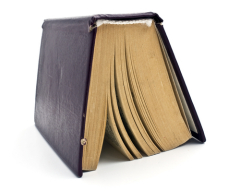
Sometimes, just putting a kettle on the table is enough for the conversation to find its own way. Phrases become less rushed, pauses become more friendly, and the most difficult topics are discussed more gently, as if wrapped in steam. What we're dealing with isn't the magic of a teapot or the cult of a drink. Rather, it's a set of simple mechanisms in the body, memory, and everyday gestures.
A hot drink focuses attention, synchronizes rhythms, gives the hands something to do, and a warm timbre to the voice. Let's try to break down the “miracle of the teapot” into understandable details: from the physiology of warmth to the culture of shared mugs, from table rituals to the small ethics of listening.
Warmth as body language
A warm cup isn't a metaphor for “homeliness,” but a specific signal to the nervous system. The warmth in your palms and abdomen triggers relaxation: peripheral blood vessels dilate, breathing deepens, and your voice becomes lower and calmer.
When we're warm, we're more likely to trust. A cold body first needs a blanket, then sympathy. Warmth signals “safety,” and the psyche opens the door to conversation.
Boiling water temperature
Tea does not tolerate haste in technology:
- you need to wait for it to boil;
- brewing;
- pour;
- cool to “its” temperature.
At this pace, conversation itself slows to human speed. We stop responding reflexively and begin thinking out loud. During a tea break, even silence doesn't feel awkward: it acts as a “time for meaning to steep.”
Hands busy – head free
Holding a cup, a spoon, or reaching for sugar or lemon are small, predictable actions. They relieve unnecessary tension usually spent on “where to put your hands” and “how to sit.”
When the body knows what to do, the mind stops clinging to form and takes up content. This is how a stable psychological table emerges: conversation rests on objects, like furniture.
The shared trajectory is from the teapot to the ear. The pouring of tea into mugs sets the overall rhythm: everyone reaches for the teapot, inserts tea bags or pours tea, and moves saucers. Micro-movements synchronize the group. Synchronicity is always about trust: we say “we are in this together,” even if the conversation is difficult.
Hot steam literally softens speech: the mucous membranes are moistened, the throat relaxes, and the voice becomes rounder. Words sound warmer, and even direct statements don't grate. Importantly, it's easier to ask questions or clarify something over a cup—a pause is “explained” by a sip, not by awkwardness.
Tradition is the antidote to chaos. Any consistent order reduces anxiety. “Put the kettle on—get the cups out—fill—pour—cover”—that's the script everyone knows. Tradition transforms a meeting into a predictable framework: we understand where the beginning (the boiling), the middle (the steeping), and the end (the last sips) is. Within such a framework, it's easier to discuss important matters: there's less chaos and more support.
General temperature of the relationship
Tea calms extremes. It's harder to raise your voice with it: the heat in your hand encourages composure. The cup also acts as a mutual shield: each person has their own “circle of warmth,” a boundary that makes intimacy safer. We don't move seats closer, or move our chairs every two minutes—just moving a saucer closer is enough. A small change, but the atmosphere is already calmer.
Offering someone lemon or honey is the simplest form of attention. We ask not “how are you feeling in general,” but “what do you prefer right now?” Situational empathy is easier to accept. By embracing the minutiae of tea—who drinks what, who drinks what kind—we rehearse respect for differences. This training later gives rise to respect for greater things.
The first sip is always about the temperature: “Are you burning yourself?” The second is about the taste. It's during the second sip that the conversation often shifts from mundane to more substantive topics. Attention is already “warmed up,” the receptors are tuned, and we hear not only the other person's words but also their intonation. If you want to really talk, don't rush yourself—wait until the second sip.
Tea as a territory of equals
There's no “correct” seating arrangement or ten-piece protocol for tea. Even elaborate tea ceremonies essentially level the playing field: each person has their own cup, their own rhythm, their own little touch. This creates a good environment for conversation, where listening is key, not dominating. Coffee often sets a vigorous, forward pace, while tea sets a more attentive, close-knit pace.
Tea table etiquette—a few unspoken rules that make conversation warmer than any warm-up:
- Pour first, ask later.
- Don't argue while inhaling. If you want to object, take a sip first, then make your argument: it will take the edge off.
- Let them go to the kitchen. Sometimes people need to go “for boiling water” to catch their breath; don't hold them back.
- A pause is always good. Let the tea do the work for you: silence over a cup is not emptiness, but time for meaning.
By the way, the same mug is important. A favorite cup is a small anchor of stability. It provides a familiar support: size, weight, thickness of the rim. When an object is familiar, it's easier for the brain to “hand over” the conversation. It's surprising how often big topics “grow” precisely because of this stability of the small: the hand is occupied with something familiar, which means the mind is freer.
Home, office, road
Tea works in different “rooms”:
- Home. Here, tea is a bridge between rooms and people. It brings the family together, even if everyone has their own agenda.
- Office. Boiling water in the communal kitchen is the best watercooler: a neutral space where you can clarify issues, resolve misunderstandings, and ask for help without formal letters.
- The Road. A thermos mug isn't just an on-the-go drink, but a pocket-sized pause from which you take the neatness and bring it into someone else's space.
Sometimes boiling water doesn't bring people together. If tension is running high, hot water only increases the redness and pulse. Dosage is key: sometimes a glass of water and an open window are all you need, and the conversation comes later. Tea isn't a conflict resolver, but a softener. It works when both parties have at least a minimal intention to listen to each other.
A small set for “human conversation”
Pack a simple kit for an important conversation: a good teapot, two favorite mugs (different shapes), neutral tea (black/oolong), honey or sugar, lemon, and a clean towel. This kit is like a first aid kit for conversations: you don't have to figure out what to replace it with, but rather immediately start the right ritual.
With children, tea is a conversational exercise. Pouring a cool cup, letting them choose—”honey or jam?”—and they've already developed a modicum of independence. With older children, tea reinforces dignity: they hold the cup themselves, choose the strength, and set the rhythm of the story. Both ages teach us one thing: respect begins with a simple “whatever you prefer.”
Hot tea doesn't solve our substantive problems for us, but it creates the right conditions. In warmth, we're slower and more honest: our hands are busy, our voices are softer, our gaze is more steady, our pauses are more tolerant.
A conversation over a teapot is a small architecture of trust:
- general temperature;
- general rhythm;
- general simplicity.
If you translate tradition into practice, the rules are ridiculously simple. Put the kettle on before asking for openness. Speak after the second sip. Ask “how would you like my drink” before asking “how do you like life?” And remember that sometimes the most humane support sounds like this: “Want to sit down? I'll pour you a drink.” The cup will warm your hands, and it's easier to keep the conversation going. And where there's warmth and rhythm, people become a little closer than they were five minutes ago.





